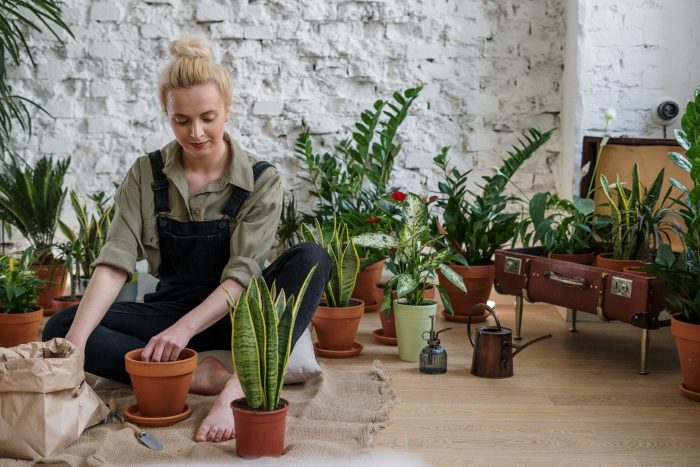If you have houseplants, you’ve probably heard that you shouldn’t fertilize your houseplants during the winter because most houseplants go into a mild state of dormancy over the winter. This is true, but how do you know when to start fertilizing them again?
Many guidelines say to fertilize between April and September. Thats not an incorrect approach, but honestly, your active growing season will vary a lot based on your location. The trick is that you can trust your plants to tell you when you can start.
When to Start Fertilizing Your Houseplants?
You can start fertilizing your houseplants once you start to see them putting out new growth. My houseplants tend to start doing this in mid-February.
7 Tips for Fertilizing Your Houseplants
- Generic houseplant fertilizer is adequate. There are lots of different kinds of fertilizer. If you have African Violets or Orchids, you can get specific fertilizer for those, but generic fertilizer is good enough for general leafy houseplants.
- Dilute the fertilizer more than recommended. Most fertilizers will have two mixing guidelines on the package. Usually, it will be one for monthly fertilizing and one for weekly fertilizing. I recommend diluting it even a bit more than the weekly ratio. Your plants can only use so many nutrients, and too much fertilizer can cause damage and make your plants more susceptible to certain pests.
- Use a recycled pop or water bottle to mix your fertilizer. This makes it easy to mix since you know exactly how much the bottle holds. In a standard 16 ounce bottle, I use 2-3 drops of my basic houseplant fertilizer based on the package’s mixing instructions. I write how many drops are needed on the bottle with a permanent marker, so I don’t have to always read the fine print on the fertilizer container.
- Apply fertilizer less frequently than recommended. As mentioned above, too much fertilizer can cause more problems for your plants. When my houseplants are just starting to put out new growth in early spring, I will fertilize them once a month. During summer, I’ll fertilize them every two weeks.
- Don’t fertilize succulents or cacti. Most succulent type plants, and cacti, have adapted to live in really terrible soil with very little water. This means they really don’t need much for nutrients; most common potting soil is already too rich for them. So don’t bother to fertilize them.
- Water your plants before applying liquid fertilizer. Liquid fertilizer is very concentrated, and if the soil and roots of your plants are dry, it can actually cause chemical burns on them, which makes it more difficult for them to absorb those nutrients. So water your plants first, and then apply fertilizer sparingly once the soil is damp.
- Apply fertilizer sparingly. Excess fertilizer can cause nutrient buildups in the soil that can have adverse effects on your plants, or it will wash away when you water your plants next time into your drip trays. So, don’t apply a whole ton of fertilizer. Once my plants are watered, I pour a small puddle of fertilizer water onto the soil, and that’s it. Ideally, it should soak away within a minute or two.
The main thing to keep in mind when applying liquid fertilizer to your houseplants is that less is more. Don’t give them too much, and don’t do it too often, and your indoor plants will be happier for it.







Read 0 comments and reply